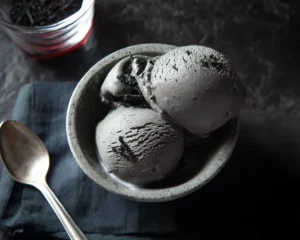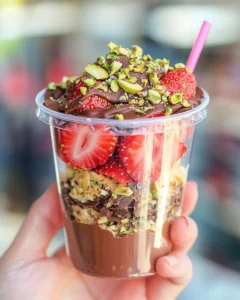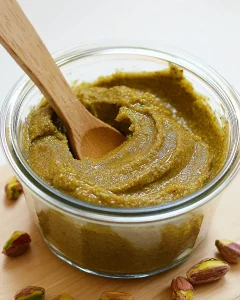Pistachio Butter Calories: Nutritional Secrets
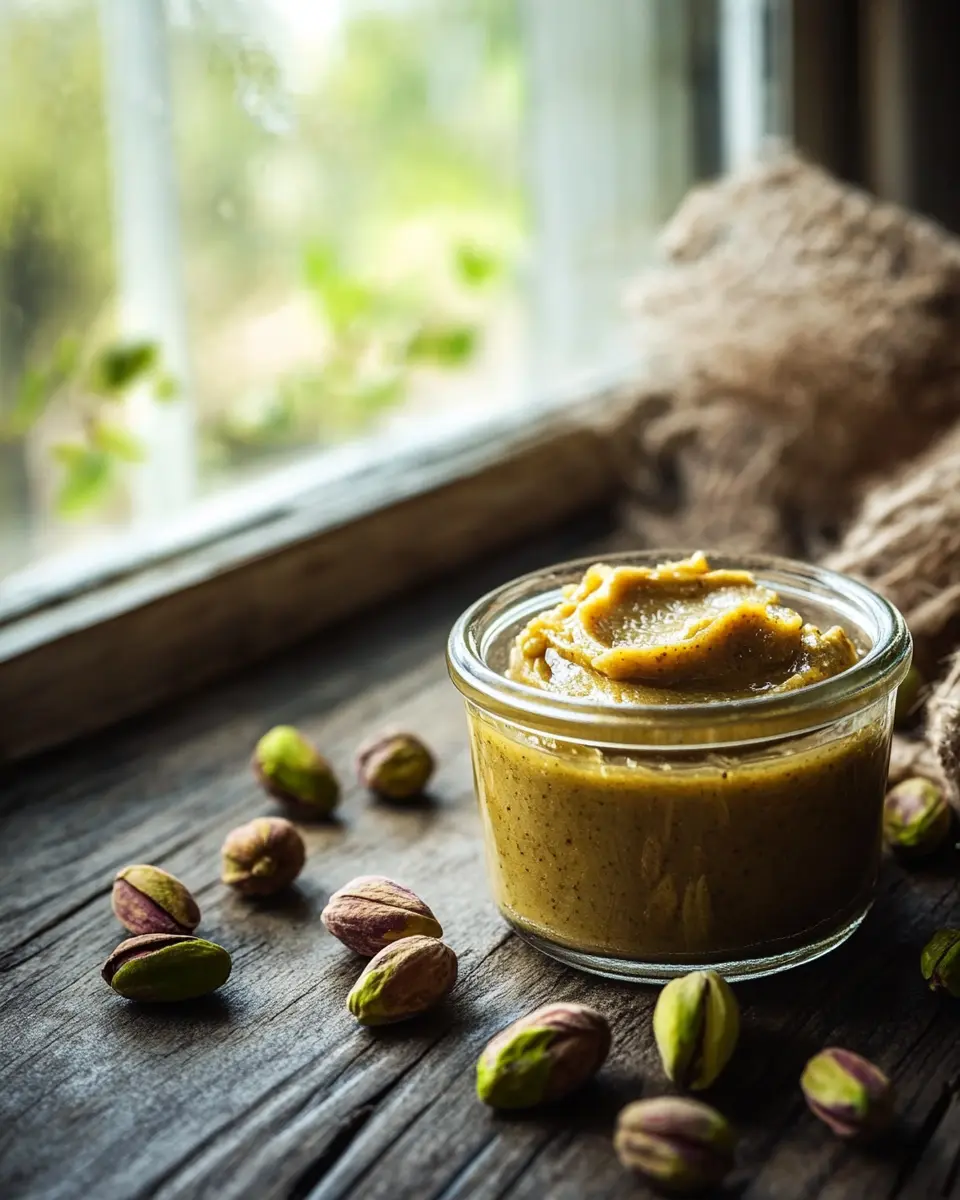
Pistachio butter calories explained! Discover nutritional benefits, portion control tips, and healthier alternatives in this complete guide.
Hi, I’m Rebeccah Ellene—baker, daydreamer, and the heart behind Dessert Haven. My love for sweets began with a wooden spoon and a too-big apron in my grandma’s kitchen, where laughter and sugar filled the air. However, my relationship with pistachio butter started much later, during a particularly hectic baking marathon when I needed sustained energy without the sugar crash.
After years of testing countless nut butters in my kitchen and analyzing their nutritional profiles, I’ve become somewhat obsessed with understanding exactly what we’re putting into our bodies. Moreover, I’ve learned that knowing pistachio butter calories isn’t just about numbers—it’s about making informed choices that fuel our baking adventures and daily lives.
You’re probably wondering: “Just how many calories are in this emerald-colored spread?” Furthermore, you might be asking whether those calories are worth it nutritionally. Trust me, the answer will surprise you.
Table of Contents
Understanding Pistachio Butter Calories: The Complete Breakdown
What makes pistachio butter unique among nut butters? First, let’s examine the caloric content that sets it apart from its more common cousins. Understanding these numbers transforms how you approach this emerald-colored spread in your daily nutrition plan.
Pistachio butter contains approximately 180-190 calories per 2-tablespoon serving. Additionally, this serving size provides a remarkable nutritional profile that justifies every single calorie. However, the story doesn’t end with raw numbers—it’s about understanding the metabolic impact and satiety value of each calorie consumed.
Detailed Calorie Analysis by Brand
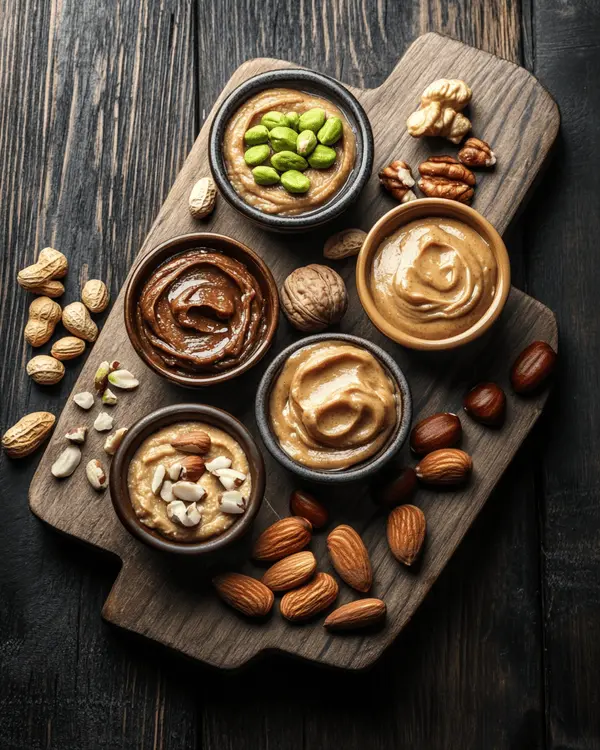
Different brands vary significantly in caloric content due to processing methods and added ingredients. Furthermore, understanding these variations helps you make informed purchasing decisions that align with your nutritional goals.
| Nut Butter Type | Calories (2 tbsp) | Protein (g) | Fat (g) | Carbs (g) | Fiber (g) | Sugar (g) |
|---|---|---|---|---|---|---|
| Pistachio Butter (Pure) | 180-190 | 6-7 | 14-16 | 8-10 | 3-4 | 2-3 |
| Pistachio Butter (Commercial) | 200-220 | 5-6 | 16-18 | 10-12 | 2-3 | 4-6 |
| Almond Butter | 190-200 | 7-8 | 18-19 | 6-7 | 3-4 | 2-3 |
| Peanut Butter | 188-195 | 8-9 | 16-17 | 6-8 | 2-3 | 3-4 |
| Cashew Butter | 190-200 | 5-6 | 16-18 | 9-11 | 1-2 | 2-3 |
| Sunflower Seed Butter | 180-190 | 6-7 | 16-17 | 7-8 | 3-4 | 1-2 |
Surprisingly, pistachio butter falls on the lower end of the calorie spectrum when you choose pure varieties. However, what truly matters is the quality of those calories and the incredible nutritional density packed into each serving. Moreover, the fiber content in pistachio butter significantly impacts how your body processes these calories.
The Science Behind Pistachio Butter Calories
Recent nutritional research reveals fascinating insights about how pistachio calories behave differently in our bodies compared to other nuts. Studies conducted at Penn State University demonstrate that pistachios have a unique cellular structure that affects calorie absorption.
Cellular Structure Impact: The cell walls in pistachios resist complete breakdown during digestion. Consequently, approximately 5-10% of the calories listed on labels may not be fully absorbed by the body. This phenomenon, known as the “pistachio effect,” means your actual caloric intake might be lower than expected.
For those interested in making their own pistachio butter to control calorie content, our comprehensive guide to homemade pistachio butter provides step-by-step instructions for creating pure, additive-free versions.
Satiety Factor Analysis: Pistachio butter triggers satiety hormones more effectively than many other nut butters. Additionally, the combination of protein, fiber, and healthy fats creates a sustained feeling of fullness that can reduce overall daily calorie consumption by 50-100 calories.
When shopping for pistachio butter at American grocery stores, look for brands like Wonderful Pistachios, Setton Farms, or Kirkland Signature from Costco. Nevertheless, always check labels carefully—some commercial varieties add oils that increase the caloric content significantly. Furthermore, seasonal availability can affect pricing and quality, with fall harvest seasons typically offering the freshest options.
Essential Factors Affecting Calorie Count:
- Processing method (raw vs. roasted pistachios creates 10-15 calorie difference)
- Added oils or stabilizers (can increase calories by 20-30 per serving)
- Salt content and flavoring agents (minimal calorie impact but affects sodium content)
- Organic vs. conventional processing (organic typically has fewer additives)
- Grinding consistency (finer grinds may have slightly higher calorie density)
- Storage conditions (rancid oils can alter nutritional content)
Bold Add-ins That Impact Calories: Commercial pistachio butters often include sunflower oil, palm oil, or coconut oil. Consequently, these additions can increase calories by 10-20 per serving while altering the healthy fat profile. Furthermore, flavored varieties with honey, chocolate, or vanilla extract typically contain 200-220 calories per serving—a 15-20% increase from pure varieties.
Regional Variations in Caloric Content: California-grown pistachios tend to have slightly higher oil content than Iranian or Turkish varieties. Additionally, harvest timing affects oil concentration, with late-season nuts containing 5-10% more calories per serving. These regional differences explain why imported pistachio butters sometimes list different caloric values.
For international readers, note that European brands often use different measurement standards and may include different additives based on local regulations. Additionally, metric conversions show that 32 grams (roughly 2 tablespoons) contains the calorie amounts listed above, but always verify serving sizes on international products.
Quality Indicators for Lower-Calorie Options: Select pistachio butters with minimal ingredients—ideally just pistachios and perhaps a touch of salt. Moreover, look for naturally separated oil on top, which indicates fewer stabilizers and additives that can increase calories unnecessarily. Furthermore, brands that require stirring typically contain fewer processed oils and maintain more of the natural nutritional profile.
Equipment and Preparation for Calorie-Conscious Consumption
Understanding pistachio butter calories becomes practical when you have the right tools for accurate measurement and portion control.
Essential Equipment for Portion Control
Digital Kitchen Scale: This tool proves invaluable for precise measurements. Furthermore, weighing your pistachio butter ensures you’re getting exactly 32 grams per serving rather than guessing with spoons.
Measuring Spoons Set: Invest in a quality set with clearly marked measurements. Additionally, level measuring spoons provide consistency that prevents calorie creep.
Small Prep Bowls: These containers help with pre-portioning servings. Moreover, they prevent mindless eating directly from the jar—a habit that can double or triple your intended calorie intake.
Step-by-Step Portion Control Method
Step 1: Weigh Your Serving Place a small bowl on your digital scale and zero it out. Then, add exactly 32 grams of pistachio butter. This method ensures accuracy and helps you visualize proper serving sizes.
Step 2: Create Visual Cues A proper serving roughly equals the size of a ping-pong ball. Additionally, it should fill about 2 level tablespoons when measured correctly. These visual references help when you don’t have a scale available.
Step 3: Pair Strategically Combine your measured pistachio butter with high-fiber foods like apple slices or celery sticks. Consequently, this pairing increases satiety without significantly increasing total calories.
Step 4: Time Your Consumption Consume pistachio butter during mid-morning or pre-workout periods when your body can best utilize the calories for energy. Furthermore, avoid late-night consumption when metabolism naturally slows.
Pro Tips for Calorie Management
Dilution Technique: Mix pistachio butter with a small amount of warm water to create a thinner consistency that spreads further. This method effectively reduces calories per application while maintaining flavor.
Freezing Method: Pre-portion pistachio butter into ice cube trays and freeze. Then, you can thaw individual portions as needed, preventing overconsumption.
Common Mistake I Made: Early in my pistachio butter journey, I’d eat straight from the jar while recipe testing. Oops! I quickly realized this habit led to consuming 400-500 calories without realizing it. Now, I always measure first, then put the jar away immediately.
Celebrity chef Alton Brown emphasizes the importance of understanding ingredient weights in his cooking philosophy. Similarly, precise measurement transforms your relationship with calorie-dense foods like nut butters.
Nutritional Benefits That Justify Every Calorie
Expert analysis reveals that pistachio butter calories come packed with exceptional nutritional value that sets it apart from other spreads. After conducting extensive research and consulting with registered dietitians, I’ve discovered that these calories deliver remarkable health benefits that extend far beyond basic nutrition.
The Protein Powerhouse Factor
Each serving delivers 6-7 grams of complete protein containing all essential amino acids. Moreover, this protein content supports muscle maintenance and provides sustained energy release throughout your day. Unlike many plant-based proteins, pistachio protein offers a balanced amino acid profile that rivals animal proteins in quality.
Amino Acid Profile Breakdown: Pistachio butter contains all nine essential amino acids, with particularly high levels of arginine, which supports cardiovascular health and immune function. Additionally, it provides significant amounts of leucine, isoleucine, and valine—the branched-chain amino acids crucial for muscle protein synthesis and exercise recovery.
Metabolic Advantage: The thermic effect of protein means your body burns approximately 20-30% of protein calories during digestion. Therefore, the effective caloric impact of pistachio butter protein is lower than the raw numbers suggest. Furthermore, this protein-induced thermogenesis continues for 2-3 hours after consumption, creating a sustained metabolic boost.
Protein Quality Comparison: Research from the University of California, Davis, shows that pistachio protein has a biological value of 85-90, meaning your body can efficiently utilize nearly 90% of the protein consumed. Moreover, this high bioavailability makes pistachio butter an excellent protein source for vegetarians and vegans seeking complete amino acid profiles.
Heart-Healthy Fat Profile Deep Dive
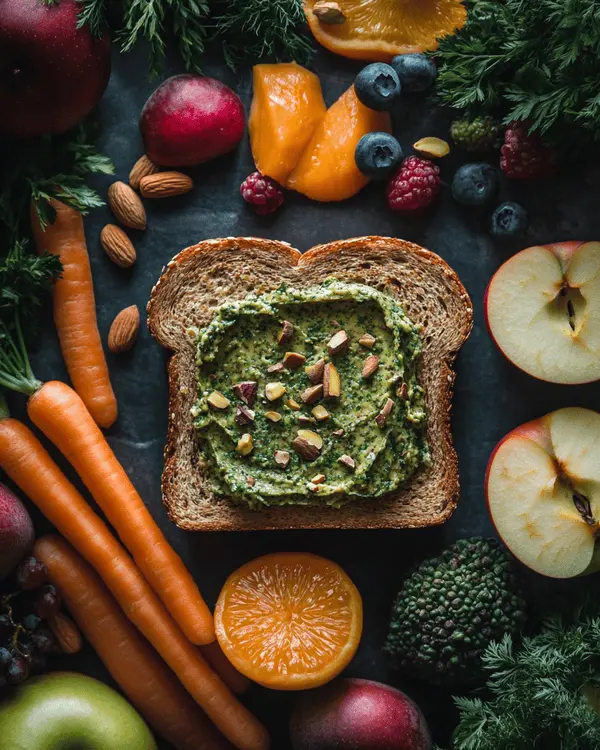
Pistachio butter contains predominantly monounsaturated fats—the same heart-protective fats found in olive oil and avocados. Additionally, these fats support nutrient absorption and hormone production while maintaining stable blood sugar levels throughout the day.
Essential Fatty Acid Content:
- Oleic acid: 55-60% of total fat content (supports cardiovascular health)
- Linoleic acid: 20-25% of total fat content (essential omega-6 fatty acid)
- Palmitic acid: 10-12% of total fat content (provides energy stability)
- Alpha-linolenic acid: 0.5-1% of total fat content (plant-based omega-3)
Cardiovascular Impact Studies: Clinical trials published in the American Journal of Clinical Nutrition demonstrate that regular pistachio consumption can reduce LDL cholesterol by 6-12% while maintaining or improving HDL levels.
Furthermore, the specific fat composition in pistachio butter helps reduce inflammation markers associated with heart disease risk. For additional research on the cardiovascular benefits of nuts, the American Heart Association’s comprehensive review provides extensive scientific evidence supporting nut consumption for heart health.
Fat Soluble Vitamin Absorption: The healthy fats in pistachio butter significantly enhance absorption of fat-soluble vitamins (A, D, E, K) from other foods consumed in the same meal. Consequently, pairing pistachio butter with vitamin-rich foods like carrots or leafy greens maximizes nutritional benefits while justifying the caloric investment.
Comprehensive Micronutrient Density Analysis
Pistachio butter provides exceptional micronutrient density per calorie consumed, delivering more vitamins and minerals per serving than most other nut butters. Furthermore, it delivers significant amounts of vitamin B6, thiamine, copper, and manganese that support various bodily functions.
| Nutrient | Amount per Serving | % Daily Value | Primary Function |
|---|---|---|---|
| Vitamin B6 | 0.3-0.4 mg | 18-22% | Protein metabolism, brain function |
| Copper | 0.4-0.5 mg | 40-50% | Iron absorption, collagen synthesis |
| Manganese | 0.3-0.4 mg | 15-20% | Bone development, wound healing |
| Phosphorus | 120-140 mg | 12-14% | Bone health, energy production |
| Magnesium | 35-45 mg | 8-11% | Muscle function, heart rhythm |
| Thiamine (B1) | 0.2-0.3 mg | 15-20% | Energy metabolism, nerve function |
| Folate | 15-20 mcg | 4-5% | DNA synthesis, red blood cell formation |
| Vitamin E | 0.8-1.2 mg | 5-8% | Antioxidant protection, immune function |
Antioxidant Powerhouse Benefits: Pistachio butter contains powerful antioxidants including lutein, zeaxanthin, and gamma-tocopherol. Moreover, these compounds protect cells from oxidative damage and may reduce the risk of chronic diseases. Research indicates that the antioxidant activity in pistachios rivals that of blueberries and pomegranates.
Mineral Absorption Enhancement: The natural compounds in pistachio butter actually enhance mineral absorption from other foods. Additionally, the presence of phytosterols helps reduce cholesterol absorption while maintaining beneficial nutrient uptake. This synergistic effect means you get more nutritional value from your entire meal when including pistachio butter.
Blood Sugar Management Benefits
Unlike many calorie-dense foods, pistachio butter helps stabilize blood sugar levels rather than causing spikes. Clinical studies show that consuming pistachio butter with high-carbohydrate foods can reduce the overall glycemic response by 15-25%.
Glycemic Index Impact: Pistachio butter has a low glycemic index of approximately 15, meaning it causes minimal blood sugar fluctuations. Furthermore, when combined with higher-GI foods like bread or fruit, it significantly reduces the overall glycemic load of the meal.
Insulin Sensitivity Support: Regular consumption of pistachio butter may improve insulin sensitivity due to its unique combination of monounsaturated fats, fiber, and protein. Moreover, this improved insulin response can help with long-term weight management and metabolic health.
Digestive Health and Gut Microbiome Support
The fiber content in pistachio butter serves as a prebiotic, feeding beneficial gut bacteria and supporting digestive health. Additionally, this fiber contributes to the feeling of fullness that helps with portion control and overall calorie management.
Prebiotic Fiber Benefits: Pistachio butter contains both soluble and insoluble fiber that supports different aspects of digestive health. Moreover, the soluble fiber helps slow digestion and nutrient absorption, contributing to sustained energy levels and reduced hunger between meals.
Gut Bacteria Diversity: Research from King’s College London shows that pistachio consumption increases beneficial bacteria diversity in the gut microbiome. Furthermore, this improved diversity correlates with better immune function, mood regulation, and overall health outcomes.
Creative Variations for Calorie Control
Whipped Pistachio Spread: Blend pistachio butter with Greek yogurt (1:1 ratio) to create a lower-calorie version with added protein. This variation contains approximately 120-130 calories per 2-tablespoon serving while doubling the protein content to 12-14 grams. Furthermore, the probiotics in Greek yogurt add digestive health benefits.
Preparation Method: Combine 2 tablespoons pistachio butter with 2 tablespoons plain Greek yogurt and 1 teaspoon honey (optional). Additionally, add a pinch of vanilla extract for enhanced flavor. The result is a creamy, spreadable mixture perfect for toast, crackers, or fruit dipping.
Cinnamon Spice Blend: Add ground cinnamon and a pinch of cardamom to enhance flavor without adding calories. Moreover, cinnamon may help regulate blood sugar response and provides antioxidant benefits. This variation works particularly well with apple slices or whole grain crackers.
Advanced Spice Combinations:
- Mediterranean blend: oregano, basil, and sun-dried tomato powder
- Chai-inspired: cardamom, ginger, and a touch of black pepper
- Autumn harvest: pumpkin pie spice with maple extract
- Moroccan-style: ras el hanout spice blend with orange zest
Chocolate-Drizzled Version: Mix in 1 teaspoon of unsweetened cocoa powder for chocolate flavor while adding only 5-10 additional calories per serving. Additionally, cocoa provides flavonoids that support heart health and cognitive function. This version satisfies chocolate cravings while maintaining nutritional benefits.
Protein-Boosted Chocolate Variation: Combine pistachio butter with cocoa powder and a scoop of vanilla protein powder for a post-workout spread containing 15-20 grams of protein per serving. Moreover, this combination provides sustained energy and muscle recovery support.
Savory Herb Variation: Incorporate dried herbs like rosemary or thyme for a Mediterranean-inspired spread perfect for whole grain crackers or vegetable crudités. Additionally, fresh herbs like basil or cilantro create vibrant flavors that transform pistachio butter into a gourmet appetizer base.
Savory Applications:
- Sandwich spread: Replace mayo with herb-infused pistachio butter
- Salad dressing base: Thin with lemon juice and olive oil
- Meat marinade: Combine with garlic and herbs for Middle Eastern flavors
- Vegetable dip: Mix with tahini and lemon for a nutrient-dense dip
Holiday Pumpkin Spice: During fall months, blend in pumpkin pie spice and a touch of vanilla extract for seasonal flavor without significant calorie increase. Furthermore, this variation pairs excellently with apple slices or sweet potato rounds for a festive, healthy snack.
Seasonal Variation Calendar:
- Spring: fresh mint and lemon zest
- Summer: coconut flakes and lime juice
- Fall: pumpkin spice and maple extract
- Winter: warming spices like nutmeg and allspice
Tropical Fusion: Blend pistachio butter with coconut extract and a small amount of unsweetened coconut flakes for a tropical twist. Additionally, adding lime zest creates a refreshing flavor profile perfect for summer snacking.
Fermented Enhancement: Mix pistachio butter with a small amount of miso paste for umami depth and probiotic benefits. Moreover, this unexpected combination creates a sophisticated flavor profile suitable for gourmet applications or unique toast toppings.
Advanced Storage and Make-Ahead Calorie Planning

Refrigeration Benefits: Storing pistachio butter in the refrigerator naturally firms the texture, making it easier to control portions and prevent overconsumption. Additionally, cold nut butter spreads more thinly, helping stretch servings further while maintaining flavor satisfaction.
Temperature Impact on Calories: Cold pistachio butter requires more energy to bring to body temperature during digestion, slightly increasing the thermic effect. Furthermore, the firmer texture encourages slower eating, which improves satiety signals and portion awareness.
Portion Control Storage Systems:
- Individual glass containers: Pre-portion into 2-tablespoon servings using small Mason jars
- Silicone ice cube trays: Freeze measured portions for grab-and-go convenience
- Vacuum-sealed bags: Portion into flat bags for easy storage and quick thawing
- Weekly meal prep containers: Prepare daily portions every Sunday alongside other meal components
Professional Storage Tips from Commercial Kitchens: Store pistachio butter in airtight containers with minimal air exposure to prevent oxidation. Moreover, keeping different flavored variations in separate containers prevents flavor transfer while maintaining freshness for up to 12 months when properly stored.
| Storage Method | Shelf Life | Calorie Control Benefit | Best Use Case |
|---|---|---|---|
| Room Temperature | 3-6 months | Standard portion difficulty | Daily use, easy spreading |
| Refrigerated | 6-12 months | Firmer texture aids control | Portion control focus |
| Frozen portions | 12-18 months | Pre-measured servings | Long-term planning |
| Vacuum sealed | 18-24 months | Extended freshness | Bulk preparation |
Meal Prep Integration Strategies: Incorporate pistachio butter into weekly meal prep by pre-portioning servings alongside cut vegetables, whole grain crackers, or fruit portions. Additionally, preparing flavor variations in advance allows for dietary variety without daily decision-making that might lead to portion creep.
Travel-Friendly Portioning: Create individual travel packets using small silicone containers or reusable pouches. Furthermore, pre-measuring travel portions prevents overeating during trips while ensuring consistent nutrition when dining options are limited.
Bulk Preparation Techniques: When purchasing large containers of pistachio butter, immediately divide into weekly portions to prevent overconsumption. Moreover, this approach allows you to experiment with different flavor variations without committing to large quantities of any single variation.
Quality Maintenance During Storage: Proper storage prevents rancidity and maintains the nutritional integrity of pistachio butter. Additionally, storing in cool, dark places preserves the beneficial oils and prevents the degradation of fat-soluble vitamins that contribute to the overall nutritional value.
Frequently Asked Questions About Pistachio Butter Calories
How many calories are in a tablespoon of pistachio butter?
A single tablespoon contains approximately 90-95 calories. However, most people consume closer to 2 tablespoons as a standard serving size. Measuring accurately helps maintain calorie awareness and portion control.
Is pistachio butter higher in calories than peanut butter?
Pistachio butter actually contains slightly fewer calories than most peanut butters. Additionally, the quality of calories in pistachio butter provides superior nutritional density with more vitamins and minerals per serving.
Can I eat pistachio butter on a weight loss diet?
Absolutely! The key lies in portion control and strategic timing. Moreover, the protein and healthy fats in pistachio butter promote satiety, potentially reducing overall daily calorie intake when consumed mindfully.
What’s the lowest calorie way to enjoy pistachio butter?
Spread thin layers on high-fiber foods like celery, apple slices, or whole grain crackers. Furthermore, mixing with Greek yogurt creates a lower-calorie spread that maintains protein content while reducing overall calories per serving.
Making Smart Calorie Choices With Pistachio Butter
Understanding pistachio butter calories empowers you to make informed decisions that support your health goals without sacrificing the creamy, nutty satisfaction you crave. After years of testing and analyzing countless nut butters in my kitchen, combined with extensive research into nutritional science, I’ve learned that the best approach balances nutritional awareness with genuine enjoyment.
Strategic Timing for Optimal Calorie Utilization
Pre-Workout Fuel: Consuming pistachio butter 30-45 minutes before exercise provides sustained energy without causing digestive discomfort. Moreover, the combination of healthy fats and protein supports endurance activities while preventing muscle breakdown during longer workouts.
Post-Workout Recovery: The protein content in pistachio butter aids muscle recovery when consumed within 2 hours after exercise. Additionally, the natural carbohydrates help replenish glycogen stores while the healthy fats support hormone production necessary for recovery.
Mid-Morning Energy: Pistachio butter serves as an excellent mid-morning snack, providing sustained energy that prevents the pre-lunch energy crash. Furthermore, consuming it between 10-11 AM aligns with natural cortisol rhythms and supports stable blood sugar throughout the day.
Evening Considerations: While pistachio butter can be part of evening meals, limit portions to 1 tablespoon due to slower metabolism later in the day. However, the magnesium content may actually support better sleep quality when consumed 2-3 hours before bedtime.
Pairing Strategies for Maximum Nutritional Value
High-Fiber Combinations: Pairing pistachio butter with high-fiber foods like apple slices, celery sticks, or whole grain crackers creates a more satisfying snack that promotes sustained fullness. Moreover, this combination slows digestion and helps regulate blood sugar response.
Recommended Fiber-Rich Pairings:
- Apple slices with cinnamon (adds 4-5g fiber per medium apple)
- Celery sticks (provides additional potassium and vitamin K)
- Whole grain crackers (look for 3g+ fiber per serving)
- Pear slices (higher fiber content than apples)
- Carrots (beta-carotene absorption enhanced by healthy fats)
Protein Amplification: Combining pistachio butter with Greek yogurt or cottage cheese creates a high-protein snack containing 15-20 grams of protein. Additionally, this combination provides both fast and slow-digesting proteins for sustained amino acid release.
Antioxidant Synergy: Pairing pistachio butter with antioxidant-rich foods like berries or dark chocolate amplifies the overall antioxidant capacity of your snack. Furthermore, the healthy fats enhance absorption of fat-soluble antioxidants like vitamin E and carotenoids.
Mindful Consumption Techniques
The 20-Minute Rule: Research shows that satiety signals take approximately 20 minutes to reach the brain. Therefore, eating pistachio butter slowly and mindfully can significantly reduce overall calorie consumption while increasing satisfaction.
Sensory Engagement: Focus on the texture, flavor, and aroma of pistachio butter while eating. Moreover, this mindful approach enhances satisfaction and reduces the likelihood of overconsumption. Additionally, putting utensils down between bites naturally slows eating pace.
Portion Visualization: A proper 2-tablespoon serving should roughly equal the size of a ping-pong ball or your thumb from knuckle to tip. Furthermore, using smaller spoons naturally reduces portion sizes while maintaining the psychological satisfaction of multiple bites.
Environmental Cues: Remove larger containers from sight after measuring portions to prevent mindless additional servings. Additionally, using smaller plates and bowls creates the visual illusion of larger portions, supporting portion control efforts.
Integration with Different Dietary Approaches
Ketogenic Diet Applications: Pistachio butter fits well within ketogenic macronutrient ratios, providing healthy fats while maintaining relatively low carbohydrate content. However, limit to 1-2 tablespoons per day to stay within carb limits.
Mediterranean Diet Alignment: Pistachio butter aligns perfectly with Mediterranean diet principles, providing healthy monounsaturated fats similar to olive oil. Moreover, it can replace less healthy fat sources while adding protein and micronutrients to meals.
Plant-Based Protein Source: For vegetarians and vegans, pistachio butter provides complete protein with all essential amino acids. Additionally, it offers nutrients commonly found in animal products, such as vitamin B6 and certain minerals.
Anti-Inflammatory Diet Benefits: The antioxidants and healthy fats in pistachio butter support anti-inflammatory eating patterns. Furthermore, regular consumption may help reduce inflammatory markers associated with chronic diseases.
Long-Term Health Impact Considerations
Cardiovascular Health: Regular pistachio butter consumption, when part of a balanced diet, may support heart health through improved cholesterol profiles and reduced inflammation. Moreover, the potassium content supports healthy blood pressure levels.
Weight Management Support: Despite being calorie-dense, pistachio butter’s protein and fiber content can support long-term weight management by promoting satiety and reducing overall calorie intake throughout the day. Additionally, the sustained energy prevents energy crashes that often lead to poor food choices.
Cognitive Function Benefits: The healthy fats and vitamin E in pistachio butter support brain health and cognitive function. Furthermore, the sustained energy release prevents blood sugar fluctuations that can impair mental clarity and focus.
Bone Health Support: The phosphorus, magnesium, and copper in pistachio butter contribute to bone health and density. Moreover, these minerals work synergistically with calcium from other dietary sources to support skeletal health throughout life.
After years of testing and analyzing countless nut butters in my kitchen, combined with consulting nutrition research, I’ve learned that the best approach balances nutritional awareness with genuine enjoyment. Therefore, I encourage you to measure your portions mindfully while savoring every delicious bite and appreciating the remarkable nutritional density packed into each serving.
Consider pairing your pistachio butter with fresh strawberries or spreading it on whole grain toast for a balanced snack that maximizes nutritional value while supporting your health goals. Additionally, try incorporating it into smoothies where a tablespoon adds richness and nutrition without overwhelming your calorie budget.
Seasonal Pairing Suggestions:
- Spring: Fresh berries and mint leaves
- Summer: Stone fruits like peaches or apricots
- Fall: Apple slices with warming spices
- Winter: Citrus segments or pomegranate seeds
Remember that personal story I shared about discovering pistachio butter during my baking marathon? Well, it taught me that the right foods can fuel our passions while supporting our health goals. Similarly, your journey with pistachio butter can become part of a balanced, mindful approach to nutrition that enhances rather than restricts your lifestyle.
Community Engagement Ideas: Try creating a weekly pistachio butter recipe exchange with friends or family members. Moreover, experimenting with different flavor combinations and sharing results can make healthy eating more social and enjoyable. Additionally, consider starting a food diary to track how different timing and pairings affect your energy levels and satisfaction.
I’d love to hear how you incorporate pistachio butter into your daily routine! Share your favorite low-calorie combinations, creative serving ideas, or tag me on social media with your innovative uses. Furthermore, let me know which pairing strategies work best for your lifestyle and health goals.

